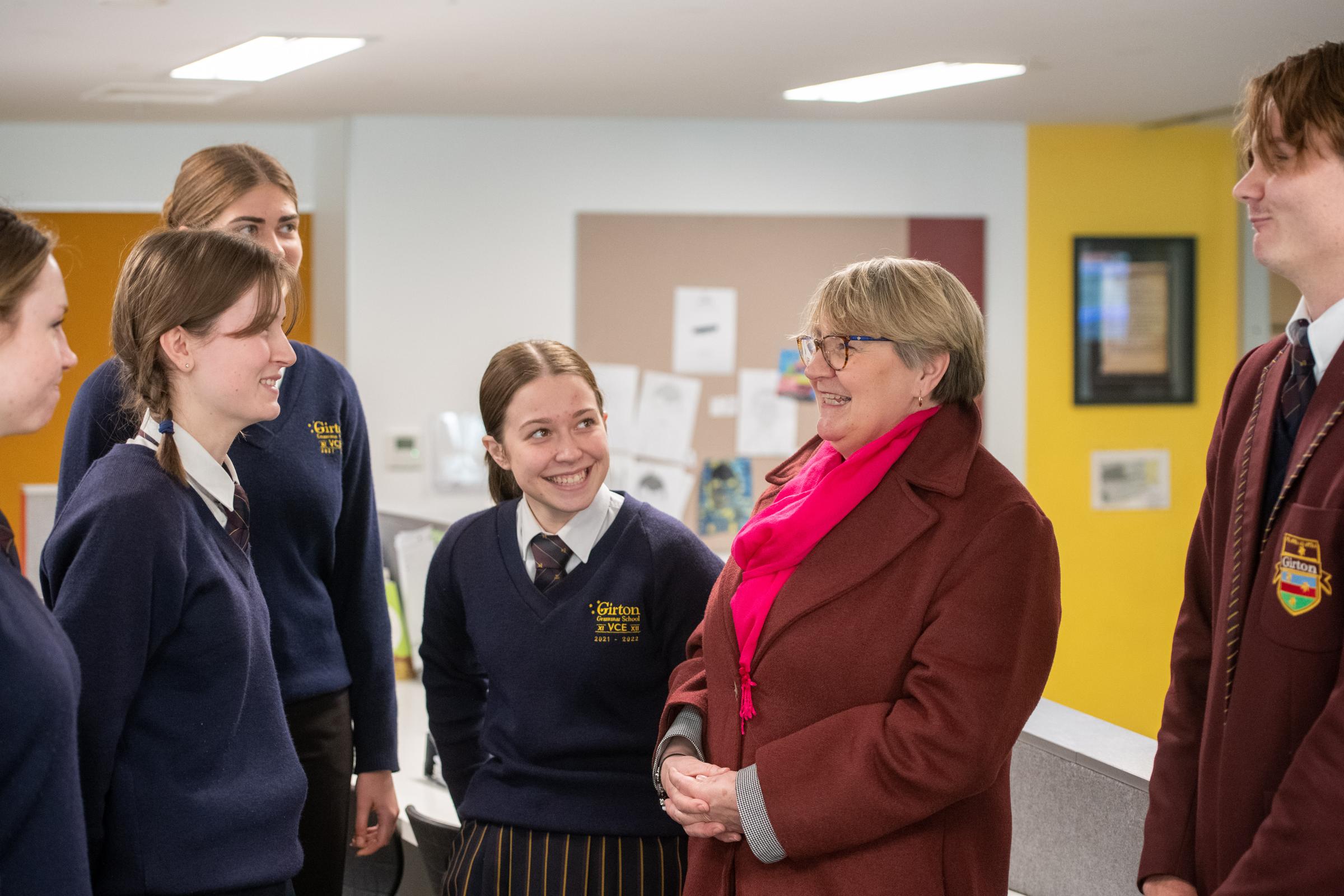From the Head of Senior School

I want to begin this article by extending a warm welcome to all our new families with students starting at Girton this term. I hope your child has felt welcomed by their peers and had a positive start to their first two weeks at Girton Grammar. Over the coming weeks, I will meet with each new student to check in on how they are adapting to the demands of a new school, both socially and academically. If you have any concerns with your child's wellbeing, your first point of contact is the child's House Tutor. Similarly, your child's classroom teacher is the first point of contact if you have any academic queries or concerns.
During Week 1, I had the pleasure of meeting all students in Years 7 to 9 to outline the expectations of the school diary use and how to complete the diary. Students will be expected to bring their diaries to every lesson and write in their homework and assessment details daily. Their teachers will give students time at the end of every class for this to occur. To assist students in remembering to bring their diaries to classes, we are displaying reminders during House Tutor Group and at the start of every lesson on the interactive whiteboard screens in every classroom.
Good organisation skills are essential to help students manage the workload of School and social commitments, especially as they head towards Year 10 and beyond when the academic demands will usually increase. A diary improves organisation, sharpens focus, assists with planning, and helps start the day with clarity by getting all their responsibilities in order. It also helps to reduce procrastination because they can manage their time better, and it helps boost their memory. Your child is encouraged to bring home their diary daily, so you can also monitor and encourage their organisation. For some children, using a diary may present a new challenge, but with time and support from the School, their organisation skills will improve considerably. If you have any concerns regarding your child's organisation, please do not hesitate to contact your child's House Tutor.
At the Principal's Assembly in Week 1, the School Captains and Vice Captains presented a unique and fun way to remind students of our uniform policy. With the constant variable change in weather patterns that have been happening, it is a timely reminder of our uniform expectations. There are now three uniform suites that can be worn to allow for the change in weather patterns. In particular, the following personal presentation rules are important to maintain a sense of pride and consistency and are often the most regular uniform breaches.
- All shirts must be tucked into shorts, skirts, or long pants for both summer and winter uniform suites.
- Hats must be worn outside at all times.
- No PE jackets must be worn with the formal and summer uniform suites.
- All dresses and skirt lengths must be worn on or below the knees.
- Hair longer than below the collar must be tied back and off the face.
- No necklaces or more than one pair of earrings are permitted in each lobe.
- Earrings must be small plain studs or sleepers.
- False eyelash extensions, false nails, or nail polish are not permitted.
- No makeup is permitted.
Further clarification of the Student Uniform and Personal Presentation Policy can be found on ASTRA. We ask that you encourage your child to take pride in their appearance and respect the values of neatness and presentation by wearing the uniform correctly in line with the three suite options. The essence of the rules is that Girton students should be excellently presented without a focus on personal vanity. Parents and teachers play an important role in guiding students' attitudes towards uniform and personal presentation. Verbal warnings, uniform notifications, detentions, or other penalties may be given for a breach of the Student Uniform and Personal Presentation Policy. Once notified, action is expected of parents to direct a student to rectify the uniform issue as soon as is practical.
School uniforms are believed to be a practice that dates back to the 16th century in the United Kingdom. It is believed that the Christ Hospital School in London in 1552 was the first to use a school uniform. The earliest documented proof of institutionalised use of a standard academic dress dates back to 1222 when the then Archbishop of Canterbury ordered the wearing of the cappa clausa. This monastic and academic practice evolved into collegiate uniforms in England, particularly in charity schools where the uniform dress was often provided for poor children. Universities, primary schools, and secondary schools used uniforms as a marker of class and status. Although school uniforms can often be considered conservative and old-fashioned, uniforms in recent years, have changed as societal dress codes have changed.
In a school setting, uniforms on students provide a sense of unity. A uniform removes social, economic, and cultural barriers and brings all students on the same level, creating a sense of equality. A uniform develops a sense of belonging for the students and works as a symbol of school pride. Reducing peer pressure to dress a certain way allows students to focus more strongly on their studies.
School uniforms also teach students how to dress well. After leaving school, when they head to work and may wear wear collared shirts and long pants or adhere to the company policy of wearing appropriate work wear, they will be more comfortable doing so. Whether wearing safety gear in a construction job or corporate wear in an office, most jobs require a standard of dress. The importance of school uniform wearing extends beyond the classroom.
Ms Dawn Davis
Head of Senior School


